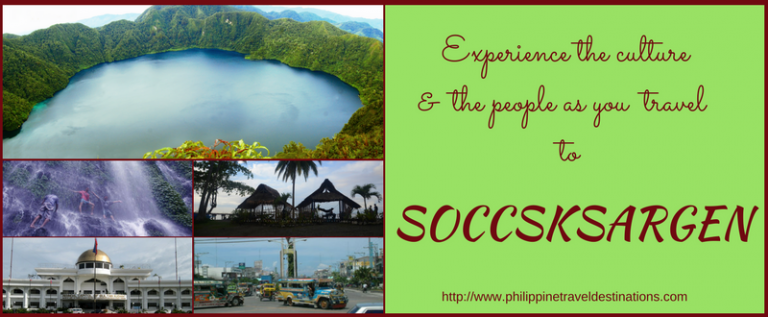In the Central Mindanao, an administrative region in the Philippines was officially reorganized in 2001 and now became known as Region XII or Soccsksargen.
Provinces
The acronym Soccsksargen refers to the four provinces and one city such as South Cotabato, Cotabato, Sultan Kudarat, Sarangani and General Santos City. Koronadal City is the regional center in South Cotabato.
Soccsksargen used to be called as Central Mindanao. The provinces that were originally part of Central Mindanao are Lanao del Norte, Lanao del Sur, Cotabato, Sultan Kudarat, and Maguindanao. When the Autonomous Region in Muslim Mindanao was created in 1990, the provinces included as part of Central Mindanao were only Lanao del Norte, Sultan Kudarat, and Cotabato.
Wide coastlines, valleys and mountain ranges can be found in this region. Known for its river system, Soccsksargen is the catch basin of Mindanao. It is a very reliable source not only of potable water and energy but most especially of food.
The Rio Grande is found in Cotabato. It is known as the longest river in entire Minadao, and it’s the second longest among other Philippine rivers.
Dialect
People in Soccsksargen speak the Manobo group of languages like Cotabato Manobo and Sarangani Manobo. Indigenous languages are also spoken by the natives such as Hiligaynon, Maranao, or Maguindanaon. A number of people speak a mixture of Ilocano and Cebuano.
Places to go
Soccsksargen boasts of scenic destinations such as Mt. Apo, old Mosques and shrines, cultural villages, Lake Sebu, lakes and hot springs.
Adventurous travelers probably wish to conquer vast mountain wilderness or explore the many forests, caves and wildlife reserves. The region’s many hectares of rubber, palm, citrus, pineapple, and lanzones farms are filled with nature’s freshest harvests.
The tribes of Central Minadao showcase their artistry reflected in the rich local colors in their handiwork. But common among all tribes is the weaving of malong. It is a versatile tubular cloth. Several other handwoven items are commonly found among the Maguindanaons and T’bolis.
Bring home exquisite handmade souvenirs such as handicrafts, beadwork, cloth, and brassware.
Tribal festivals, tours, and visits to ethnic villages provide insight into the everyday lives of these cultural minorities.

